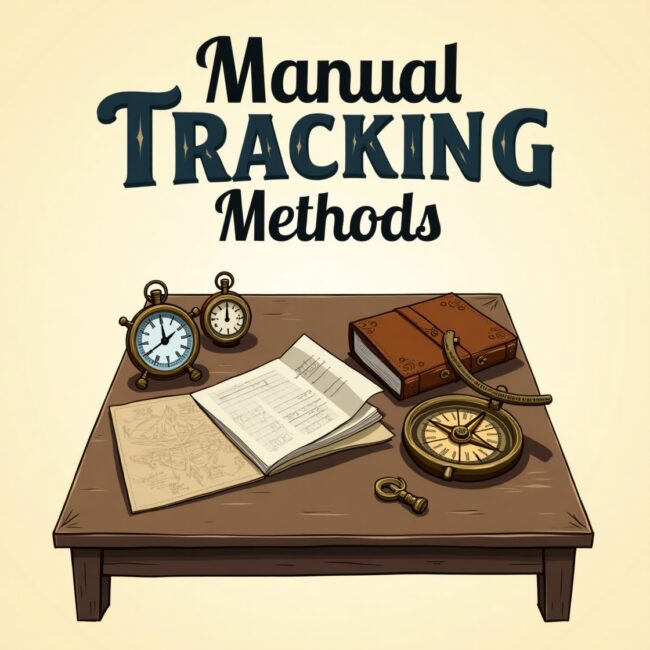Easy Ways To Track Your Business Spending And Income Table of Contents: Introduction Why Tracking Spending and Income Matters Choosi

Easy Ways To Track Your Business Spending And Income
Table of Contents:
- Introduction
- Why Tracking Spending and Income Matters
- Choosing the Right System
- Manual Tracking Methods
- Digital Tools and Apps
- Using Spreadsheets Effectively
- Setting Up Categories for Income and Expenses
- Tips for Staying Organized
- Common Mistakes to Avoid
- Conclusion
1. Introduction
Running a business, no matter the size, requires financial awareness. Tracking your income and expenses is a vital part of maintaining healthy cash flow, understanding profitability, and planning for the future. Fortunately, you don’t need to be an accountant to stay on top of your finances. In this article, we explore easy, accessible ways to monitor your business spending and income effectively.
2. Why Tracking Spending and Income Matters

Before diving into methods, let’s understand why tracking matters:
- Budget Management: Helps allocate funds where they’re needed most.
- Tax Preparation: Makes filing easier and helps ensure deductions are claimed.
- Cash Flow Monitoring: Prevents unexpected shortages or surpluses.
- Business Decision-Making: Informs strategic decisions with real data.
- Compliance: Keeps your business legally protected and audit-ready.
Failing to track finances properly can lead to overspending, missed payments, and even legal complications.
3. Choosing the Right System
The right system depends on your business size, industry, and personal preference. Some common options include:
- Manual Tracking: Pen and paper or notebooks.
- Spreadsheets: Excel or Google Sheets templates.
- Accounting Software: QuickBooks, Wave, Xero, etc.
- Apps: Mobile solutions for on-the-go tracking.
Key factors to consider:
- Ease of use
- Cost
- Scalability
- Integration with other tools (e.g., bank accounts)
4. Manual Tracking Methods

Manual tracking is simple and cost-effective, especially for new or very small businesses.
4.1. Pen-and-Paper Ledger
Create separate pages for income and expenses. Record:
- Date
- Description
- Amount
- Payment method
- Category (e.g., rent, supplies)
4.2. Envelope Method (Cash-Based Businesses)
Use physical envelopes to divide cash by category. Helps prevent overspending.
4.3. Pros and Cons
- ✅ Pros: No tech needed, low cost
- ❌ Cons: Time-consuming, higher risk of error or loss
5. Digital Tools and Apps
Modern tools automate and simplify tracking. Here are some great options:
5.1. QuickBooks
- Industry leader
- Syncs with bank accounts
- Invoicing, payroll, reporting features
5.2. Wave (Free Option)
- Great for freelancers and small businesses
- Basic invoicing and expense tracking
5.3. Xero
- Cloud-based
- Strong collaboration features
- Real-time updates
5.4. Zoho Books
- Affordable
- Customizable
- Integrates with Zoho suite
5.5. Expensify / Mint / PocketGuard
Best for tracking expenses on the go or managing personal and business finances together.
Choosing the right app:
- Start with free trials
- Consider mobile features
- Look for user-friendly dashboards
6. Using Spreadsheets Effectively

If you prefer a DIY method with flexibility, spreadsheets are powerful and customizable.
6.1. Template Essentials
Create two primary sheets:
- Income Tracker
- Date
- Source
- Amount
- Status (Paid/Unpaid)
- Expense Tracker
- Date
- Vendor
- Description
- Category
- Amount
6.2. Tips for Use
- Use formulas to auto-calculate totals
- Color-code categories
- Use filters to sort by date or vendor
- Update weekly for accuracy
6.3. Tools
- Google Sheets (collaborative and free)
- Excel (powerful features like Pivot Tables and Macros)
7. Setting Up Categories for Income and Expenses
Categorization helps you identify trends and optimize spending.
Common Income Categories:
- Sales Revenue
- Service Fees
- Consulting Income
- Rental Income
- Interest and Investments
Common Expense Categories:
- Office Supplies
- Marketing/Advertising
- Payroll
- Rent and Utilities
- Travel and Meals
- Software Subscriptions
- Professional Services (Legal/Accounting)
Tips:
- Keep categories consistent
- Review categories quarterly
- Avoid overly detailed breakdowns unless necessary
8. Tips for Staying Organized
8.1. Schedule Weekly Check-ins
Review and update records every Friday or Monday.
8.2. Separate Business and Personal Finances
Open a dedicated business bank account and credit card.
8.3. Keep Receipts and Invoices
Use digital storage (Google Drive, Dropbox) or expense apps that allow photo uploads.
8.4. Automate When Possible
- Link accounts to apps
- Set recurring transactions
- Schedule automatic reports
8.5. Back Up Your Data
Regularly save copies of spreadsheets or accounting reports.
9. Common Mistakes to Avoid

9.1. Procrastinating Updates
Waiting weeks to log transactions leads to confusion and missing data.
9.2. Mixing Personal and Business Spending
This muddies your records and complicates taxes.
9.3. Failing to Review Reports
Tracking is only useful if you use the data. Set time aside to review reports monthly.
9.4. Not Backing Up
Digital records can be lost. Use cloud storage and make local backups.
9.5. Overcomplicating Systems
Start simple. Complexity can become a barrier to consistency.
10. Conclusion
Tracking your business income and expenses doesn’t need to be overwhelming or expensive. Whether you prefer paper, spreadsheets, or apps, the key is to stay consistent and organized. A clear picture of your finances empowers smarter decisions, better budgeting, and long-term success. Choose a method that suits your comfort level and business needs, then commit to maintaining it regularly. You’ll thank yourself during tax season—and every time you make a major financial decision.
11. Implementing Advanced Financial Strategies
11.1. Establishing a Cash Reserve
Building a cash reserve is crucial for managing unexpected expenses or downturns in revenue. Aim to set aside a portion of your profits into a separate savings account dedicated to emergencies. This reserve acts as a financial buffer, ensuring business continuity during challenging times.
11.2. Forecasting and Scenario Planning
Regularly forecasting your income and expenses allows you to anticipate future financial needs and make informed decisions. Scenario planning involves creating different financial models based on various business conditions, helping you prepare for uncertainties and adjust strategies accordingly.
11.3. Cost-Benefit Analysis for Investments
Before making significant expenditures, conduct a cost-benefit analysis to evaluate the potential return on investment (ROI). This process involves comparing the expected benefits of an investment against its costs, ensuring that your spending aligns with business growth objectives.
12. Leveraging Financial Reports for Strategic Decision-Making

12.1. Profit and Loss Statement
A Profit and Loss (P&L) statement summarizes your revenues, costs, and expenses over a specific period, providing insights into your business’s profitability. Regularly reviewing your P&L helps identify trends, manage costs, and make pricing decisions.
12.2. Balance Sheet
The balance sheet offers a snapshot of your business’s financial position at a given point in time, detailing assets, liabilities, and equity. Analyzing your balance sheet assists in assessing financial stability and planning for future growth.
12.3. Cash Flow Statement
A cash flow statement tracks the flow of cash in and out of your business, highlighting operational, investing, and financing activities. Monitoring cash flow ensures you have sufficient liquidity to meet obligations and invest in opportunities.
13. Integrating Financial Management with Business Operations
13.1. Aligning Financial Goals with Business Objectives
Ensure that your financial tracking aligns with your broader business goals. For instance, if expanding your product line is a priority, allocate resources accordingly and monitor the financial impact of this decision.
13.2. Cross-Department Collaboration
Encourage collaboration between departments to share financial insights. For example, sales teams can provide forecasts that inform budgeting, while the finance team can offer insights into cost-saving opportunities.
13.3. Continuous Improvement and Feedback Loops
Establish a culture of continuous improvement by regularly reviewing financial performance and seeking feedback from stakeholders. This approach fosters adaptability and responsiveness to changing business environments.
14. Overcoming Common Challenges in Financial Tracking
14.1. Managing Seasonal Fluctuations
Businesses with seasonal income may face challenges in maintaining consistent cash flow. Implement strategies such as diversifying revenue streams or securing short-term financing to manage these fluctuations effectively.
14.2. Handling Complex Transactions
Complex transactions, such as mergers or acquisitions, require meticulous financial tracking. Work closely with financial advisors to ensure accurate recording and compliance with accounting standards.
14.3. Navigating Tax Regulations
Stay informed about tax regulations and deadlines to avoid penalties. Utilize accounting software that updates with the latest tax laws and consider consulting with tax professionals for guidance.
15. Case Studies: Real-World Applications
15.1. Freelance Graphic Designer
A freelance graphic designer implemented a cloud-based accounting system to track income and expenses. By categorizing expenses and setting up recurring invoices, they streamlined their financial processes, leading to improved cash flow management.
15.2. E-commerce Store Owner
An e-commerce store owner integrated their online sales platform with accounting software, automating transaction imports. This integration reduced manual data entry errors and provided real-time financial insights, aiding in inventory and pricing decisions.
15.3. Consulting Firm
A consulting firm established a detailed chart of accounts to track various service lines. Regular financial reviews enabled them to identify underperforming areas and reallocate resources, resulting in increased profitability.
16. Conclusion
Effective tracking of business spending and income is fundamental to the success and sustainability of any enterprise. By implementing the strategies outlined in this comprehensive guide, business owners can gain better control over their finances, make informed decisions, and position themselves for long-term growth. Remember, consistency, organization, and the right tools are key to mastering financial management.



COMMENTS